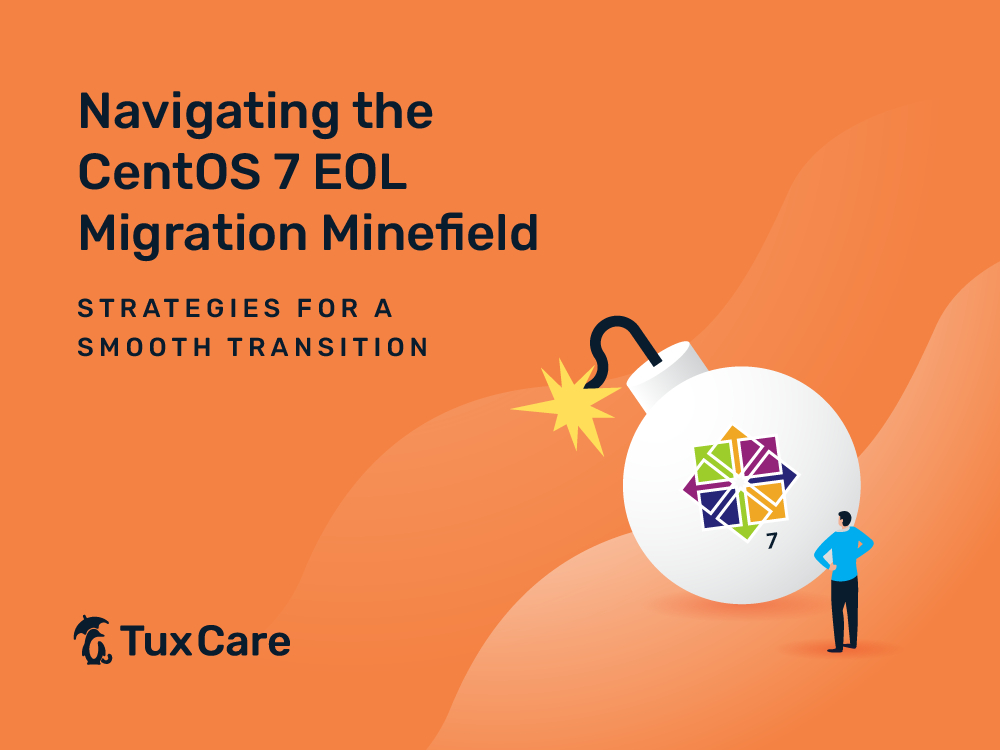Navigating the CentOS 7 EOL Migration Minefield: Strategies for a Smooth Transition
- Facing CentOS 7 end of life (EOL), organizations must migrate to new Linux distributions, requiring strategic planning to avoid disruptions and security risks.
- Migration involves choosing suitable distributions while managing technical differences.
- Expert guidance is crucial for navigating complexities, ensuring proactive issue resolution, and maintaining secure IT infrastructure.
As the CentOS 7 end of life (EOL) approaches, organizations are confronted with the critical need to migrate their server fleets to a new Linux distribution. This transition, essential for maintaining secure and supported IT environments, introduces a spectrum of challenges, from technical obstacles to operational uncertainties. This article aims to clarify the complexities of distribution migration, emphasizing the importance of strategic planning and careful execution to overcome potential hurdles and ensure a successful migration.
The Risks of Migration
Transitioning from one Linux distribution to another entails significant risks that can disrupt an organization’s operations. Beyond mere technical glitches, such as compatibility issues with existing applications or dependencies on specific software versions, organizations may face potential downtime, data loss, and exposure to security vulnerabilities.
These risks are magnified when migrating from a well-established platform like CentOS 7, especially given its impending EOL and the absence of a direct upgrade path within the same family.
Upgrades vs. Migrations: Understanding the Difference
It is vital to distinguish between upgrading to a newer version within the same distribution and migrating to an entirely different one. Upgrades usually follow a structured process supported by the distribution’s maintainers, making them relatively straightforward.
However, migration demands a comprehensive evaluation of the new distribution’s ecosystem, necessitating reconfiguration of services and adaptation to unfamiliar system management tools and philosophies. A successful migration requires thorough compatibility assessments to identify and address potential issues before they impact the production environment.
The CentOS 7 EOL Dilemma
With CentOS 7 EOL on the horizon, organizations are prompted to explore alternative distributions. Choices range from widely known options like Ubuntu LTS, Debian, or Red Hat Enterprise Linux (RHEL) to more direct successors within the CentOS ecosystem, such as AlmaLinux and Rocky Linux. These latter distributions promise an easier transition for CentOS users, facilitated by tools like Elevate and migrate2rocky.
However, even migrations within this closer family are not without their challenges. Differences in management tools (yum vs. DNF), default configurations, and even minor discrepancies in package versions or release timings can introduce unforeseen complications. It underscores the necessity for meticulous planning and cautious execution, regardless of the chosen migration path.
A Cautionary Tale from the Forums
A poignant example of what can go wrong during operating system migrations comes from a forum discussion where a user encountered a significant SSH issue. After migrating to a new Linux version, they discovered that the SSH service was failing to start due to an OpenSSH package update. The root cause was traced back to missing or incorrectly permissioned private key files required for SSH authentication. The solution involved editing the /etc/ssh/sshd_config file to specify the correct host keys and restarting the SSH service.
While this fix seems straightforward, the real challenge emerges when deploying it across a large server fleet. In such cases, a seemingly minor issue can escalate into a significant operational headache, as the fix requires direct access to each affected server, complicating large-scale automated deployments.
Proactive Measures for a Successful Migration
This instance serves as a potent reminder of the criticality of comprehensive planning and robust testing in migration projects, like transitioning away from CentOS 7 EOL. Unexpected challenges like the SSH configuration issue underscore the need for rigorous pre-migration testing and the potential benefits of sandbox environments to identify and resolve issues in a controlled setting. For large-scale migrations, considering a phased approach can help manage risks by allowing for adjustments based on early experiences in the migration process.
The Value of Expert Guidance
As organizations consider their pathways away from CentOS 7, including the option to continue securely with TuxCare’s Extended Lifecycle Support (ELS), the role of expert guidance cannot be overstated.
TuxCare ELS not only offers the opportunity to extend the life of CentOS 7 EOL deployments safely but also provides access to seasoned Linux architects through its CentOS 7 ELS Complete option. These experts are a crucial resource, offering deep insights into the migration process, potential pitfalls, and best practices for a smooth transition. Their expertise, combined with the support offered through TuxCare ELS, ensures that organizations can preempt challenges, facilitating efficient and minimally disruptive migrations.
Engaging with professionals who bring a wealth of experience and knowledge to the table can make the difference between a fraught migration and a seamless transition, underscoring the value of expert guidance in navigating the complexities of Linux distribution migration.
Final Thoughts
The need for a migration to another Linux distribution, prompted by the impending CentOS 7 EOL, exemplifies the broader challenges of distribution migration. It’s a complex process that requires careful consideration, thorough testing, and – ideally – guidance from experienced professionals. By learning from real-world cases and leveraging expert advice, organizations can navigate these challenges successfully, ensuring their IT infrastructure remains robust, secure, and up to date.


 Documentation
Documentation Login
Login




